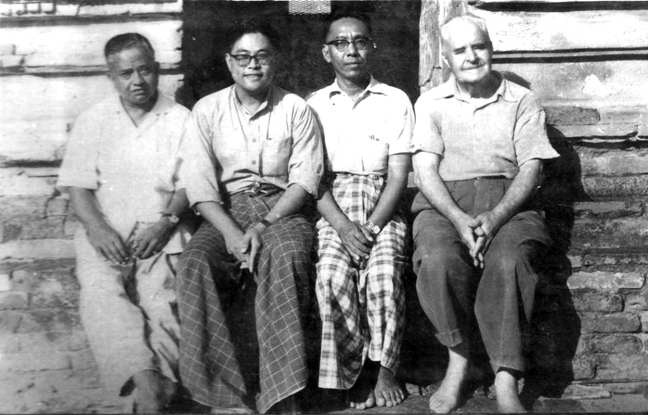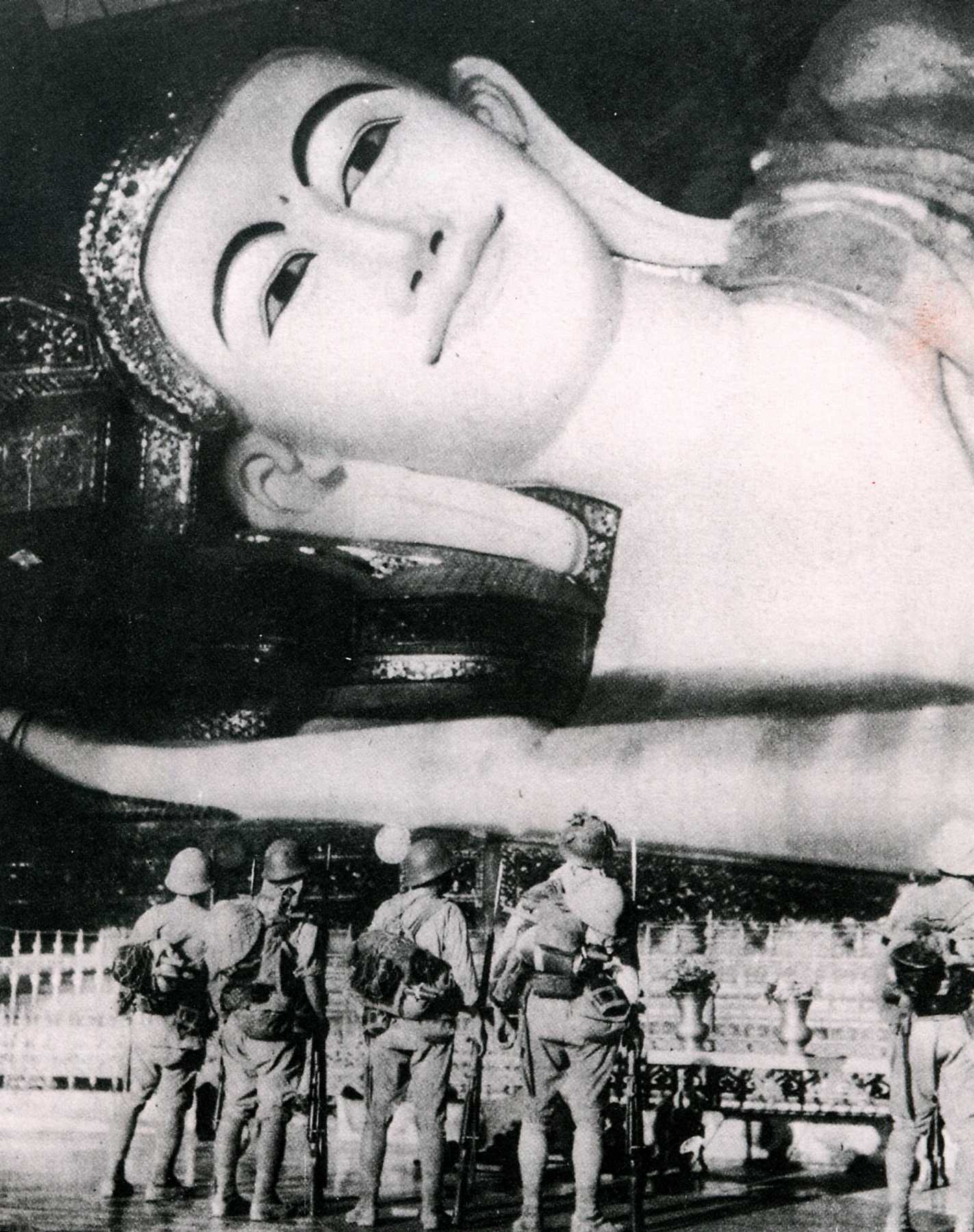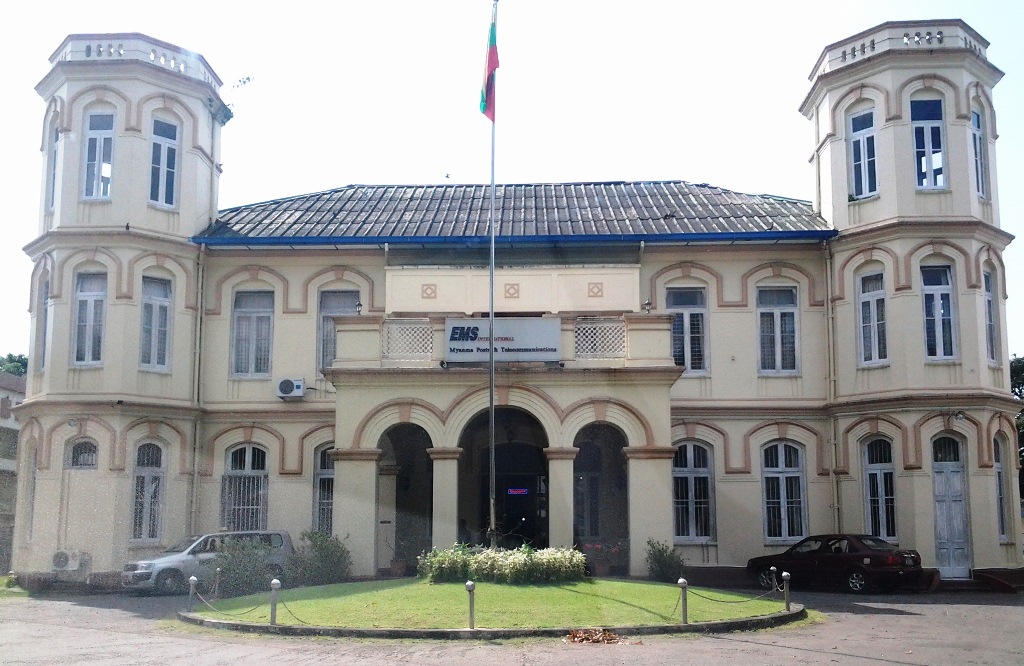|
Theippan Maung Wa
Theippan Maung Wa ( ; 5 June 1899 – 6 June 1942) was a Burmese writer, and one of the pioneers of the '' Hkit San'' literary movement. The movement searched for a new style and content in Burmese literature before the Second World War starting with ''Hkit san ponbyin'' (''Experimental Tales'', 1934, 1938). Early works He started writing newspaper articles whilst still in high school assuming the pen name Waziya Tint. In 1919, he graduated from the Maha Buddhaghosa High School with distinctions in Burmese and Pali literature. Soon after he began his studies in Rangoon College in 1920, the first university student strike in the history of Burma broke out, and he left university to teach at the first of the National Schools that came into being, as an act of defiance against the colonial education system, until 1923. Sein Tin resumed his studies later and graduated B.A. Hons. with distinctions in Burmese in 1927, the first student in Burmese history to do so. Theippan Kyaung ... [...More Info...] [...Related Items...] OR: [Wikipedia] [Google] [Baidu] |
Mawlamyaing
Mawlamyine (also spelled Mawlamyaing; , ; ; , ), formerly Moulmein, is the fourth-largest city in Myanmar (Burma), ''World Gazetteer'' southeast of Yangon and south of Thaton, at the mouth of Thanlwin (Salween) River. Mawlamyine was an ancient city and the first capital of British Burma. The city is currently the capital and largest city of Mon State and the main trading centre and seaport in southeastern Myanmar. Etymology and legend The Mon name which was previously used for Mawlamyine, ''Moulmein'' (; ) means "damaged eye" or "one-eyed man." According to legend, a Mon king had a powerful third eye in the centre of his forehead, able to see what was happening in neighbouring kingdoms. The daughter of one of the neighbouring kings was given in marriage to the three-eyed king and managed to destroy the third eye. The Burmese name "Mawlamyine" is believed to be a corruption of the Mon name. Moulmein was also spelled as ''Maulmain or Moulmain or Maulmein'' in some records o ... [...More Info...] [...Related Items...] OR: [Wikipedia] [Google] [Baidu] |
Min Thu Wun
Thiri Pyanchi Min Thu Wun (; 10 February 1909 – 15 August 2004) was a Burmese poet, writer and scholar who helped launch a new age literary movement called Khit-San (Testing the Times) in Burma. He is the father of Htin Kyaw, president of Myanmar from 2016 to 2018. Distinguished career Born Maung Wun at Kungyangon in Mon state in 1909, he was of Mon and Bamar (Burman) descent. He started writing poems at the age of 20 for Rangoon College (later Rangoon University) magazine. It was in university that he, along with the other students of Professor Pe Maung Tin – Theippan Maung Wa and Zawgyi, pioneered the ''Hkit san'' style of short stories and poems, published in the university magazine, and ''Ganda Lawka'' (World of Books) magazine which he edited, under the tutelage of J.S. Furnivall, founder of the Burma Research Society. The year 1934 saw the publication of ''Hkit san pon byin'' (Experimental Tales) – a collection of short stories to test the readers' reactio ... [...More Info...] [...Related Items...] OR: [Wikipedia] [Google] [Baidu] |
University Of Yangon Alumni
A university () is an institution of tertiary education and research which awards academic degrees in several academic disciplines. ''University'' is derived from the Latin phrase , which roughly means "community of teachers and scholars". Universities typically offer both undergraduate and postgraduate programs. The first universities in Europe were established by Catholic monks. The University of Bologna (), Italy, which was founded in 1088, is the first university in the sense of: *being a high degree-awarding institute. *using the word (which was coined at its foundation). *having independence from the ecclesiastic schools and issuing secular as well as non-secular degrees (with teaching conducted by both clergy and non-clergy): grammar, rhetoric, logic, theology, canon law and notarial law.Hunt Janin: "The university in medieval life, 1179–1499", McFarland, 2008, , p. 55f.de Ridder-Symoens, Hilde''A History of the University in Europe: Volume 1, Universities in the ... [...More Info...] [...Related Items...] OR: [Wikipedia] [Google] [Baidu] |
1942 Deaths
The Uppsala Conflict Data Program project estimates this to be the deadliest year in human history in terms of conflict deaths, placing the death toll at 4.62 million. However, the Correlates of War estimates that the prior year, 1941, was the deadliest such year. Death toll estimates for both 1941 and 1942 range from 2.28 to 7.71 million each. Events Below, the events of World War II have the "WWII" prefix. January * January 1 – WWII: The Declaration by United Nations is signed by China, the United Kingdom, the United States, the Soviet Union, and 22 other nations, in which they agree "not to make any separate peace with the Axis powers". * January 5 – WWII: Two prisoners, British officer Airey Neave and Dutch officer Anthony Luteyn, escape from Colditz Castle in Germany. After travelling for three days, they reach the Swiss border. * January 7 – WWII: ** Battle of Slim River: Japanese forces of the 5th Division, supported by tanks, sweep through ... [...More Info...] [...Related Items...] OR: [Wikipedia] [Google] [Baidu] |
1899 Births
Events January * January 1 ** Spanish rule formally ends in Cuba with the cession of Spanish sovereignty to the U.S., concluding 400 years of the Spanish Empire in the Americas.''The American Monthly Review of Reviews'' (February 1899), pp. 153-157 ** In Samoa, followers of Mataafa, claimant to the rule of the island's subjects, burn the town of Upolu in an ambush of followers of other claimants, Malietoa Tanus and Tamasese, who are evacuated by the British warship HMS ''Porpoise''. ** Queens and Staten Island become administratively part of New York City. * January 2 – Theodore Roosevelt is inaugurated as Governor of New York at the age of 39. * January 3 – A treaty of alliance is signed between Russia and Afghanistan. * January 5 – **A fierce battle is fought between American troops and Filipino defenders at the town of Pililla on the island of Luzon. *The collision of a British steamer and a French steamer kills 12 people on the English Channel. * Jan ... [...More Info...] [...Related Items...] OR: [Wikipedia] [Google] [Baidu] |
Japanese Occupation Of Burma
The Japanese occupation of Burma was the period between 1942 and 1945 during World War II, when Burma was occupied by the Empire of Japan. The Japanese had assisted formation of the Burma Independence Army, and trained the Thirty Comrades, who were the founders of the modern Armed Forces (''Tatmadaw''). The Burmese hoped to gain support of the Japanese in expelling the British, so that Burma could become independent.Micheal Clodfelter. Warfare and Armed Conflicts: A Statistical Reference to Casualty and Other Figures, 1500–2000. 2nd Ed. 2002 . p. 556Werner Gruhl, Imperial Japan's World War Two, 1931–1945 Transaction 2007 (Werner Gruhl is former chief of NASA's Cost and Economic Analysis Branch with a lifetime interest in the study of the First and Second World Wars.) In 1942, Japan invaded Burma and, on 1 August 1943, nominally declared the colony independent as the '' State of Burma''. A pro-Japanese government led by Ba Maw was installed. However, many Burmese began ... [...More Info...] [...Related Items...] OR: [Wikipedia] [Google] [Baidu] |
Sarpay Beikman
Sarpay Beikman (; ) originated as the Burmese Translation Society. Its first President was Prime Minister U Nu, who started a Burmese translation job at Judson College (now University of Yangon). The purpose was to translate world culture, literature, education for the Burmese public. In 1963, the society was absorbed into the Ministry of Information's Printing and Publishing Enterprise as the Sarpay Beikman Literature House, and the mandate was extended to encourage local writers and to print and publish books of all types. The society presents the annual Sarpay Beikman Manuscript Awards and Burma National Literature Awards for excellent new unpublished and published writing in various categories. Early years After independence the Burmese Translation Society decided that independent Burma need a Burmese Encyclopedia and began the project to compile one in May 1948. Initially, they wanted to translate Sir John Hamilton's encyclopedia into 10 volumes. Shortly after this (in 1 ... [...More Info...] [...Related Items...] OR: [Wikipedia] [Google] [Baidu] |
Textbook
A textbook is a book containing a comprehensive compilation of content in a branch of study with the intention of explaining it. Textbooks are produced to meet the needs of educators, usually at educational institutions, but also of learners (who could be independent learners outside of formal education). Schoolbooks are textbooks and other books used in schools. Today, many textbooks are published in both print and digital formats. History The history of textbooks dates back to ancient civilizations. For example, Ancient Greeks wrote educational texts. The modern textbook has its roots in the mass production made possible by the printing press. Johannes Gutenberg himself may have printed editions of ''Ars Minor'', a schoolbook on Latin grammar by Aelius Donatus. Early textbooks were used by tutors and teachers (e.g. alphabet books), as well as by individuals who taught themselves. The Greek philosopher Socrates lamented the loss of knowledge because the media of transmis ... [...More Info...] [...Related Items...] OR: [Wikipedia] [Google] [Baidu] |
British Rule In Burma
British colonial rule in Burma lasted from 1824 to 1948, from the successive three Anglo-Burmese wars through the creation of ''Burma'' as a province of British India to the establishment of an independently administered colony, and finally independence. The region under British control was known as British Burma, and officially known as Burma () from 1886. Some portions of Burmese territories, including Arakan and Tenasserim, were annexed by the British after their victory in the First Anglo-Burmese War; Lower Burma was annexed in 1852 after the Second Anglo-Burmese War. These territories were designated as a chief commissioner's province known as British Burma in 1862. After the Third Anglo-Burmese War in 1885, Upper Burma was annexed, and the following year, the province of ''Burma'' in British India was created, becoming a ''major'' province (a lieutenant-governorship) in 1897. This arrangement lasted until 1937, when Burma was separated from British India and ma ... [...More Info...] [...Related Items...] OR: [Wikipedia] [Google] [Baidu] |
Indian Civil Service
The Indian Civil Service (ICS), officially known as the Imperial Civil Service, was the higher civil service of the British Empire in India during British Raj, British rule in the period between 1858 and 1947. Its members ruled over more than 300 million people in the presidencies and provinces of British India and were ultimately responsible for overseeing all government activity in the 250 districts that comprised British India. They were appointed under Section XXXII(32) of the Government of India Act 1858, enacted by the Parliament of the United Kingdom of Great Britain and Ireland, British Parliament. The ICS was headed by the Secretary of State for India, a member of the British cabinet. At first almost all the top thousand members of the ICS, known as "Civilians", were British, and had been educated in the best British schools.Surjit Mansingh, ''The A to Z of India'' (2010), pp 288–90 At the time of the partition of India in 1947, the outgoing Government of India's ICS ... [...More Info...] [...Related Items...] OR: [Wikipedia] [Google] [Baidu] |
Christ Church, Oxford
Christ Church (, the temple or house, ''wikt:aedes, ædes'', of Christ, and thus sometimes known as "The House") is a Colleges of the University of Oxford, constituent college of the University of Oxford in England. Founded in 1546 by Henry VIII of England, King Henry VIII, the college is uniquely a joint foundation of the university and the cathedral of the Oxford diocese, Christ Church Cathedral, Oxford, Christ Church Cathedral, which also serves as the college chapel and whose Dean of Christ Church, Oxford, dean is ''ex officio'' the college head. As of 2022, the college had 661 students. Its grounds contain a number of architecturally significant buildings including Tom Tower (designed by Christopher Wren, Sir Christopher Wren), Tom Quad (the largest quadrangle in Oxford), and the Great Dining Hall, which was the seat of the Oxford Parliament (1644), parliament assembled by Charles I of England, King Charles I during the English Civil War. The buildings have inspired repli ... [...More Info...] [...Related Items...] OR: [Wikipedia] [Google] [Baidu] |









